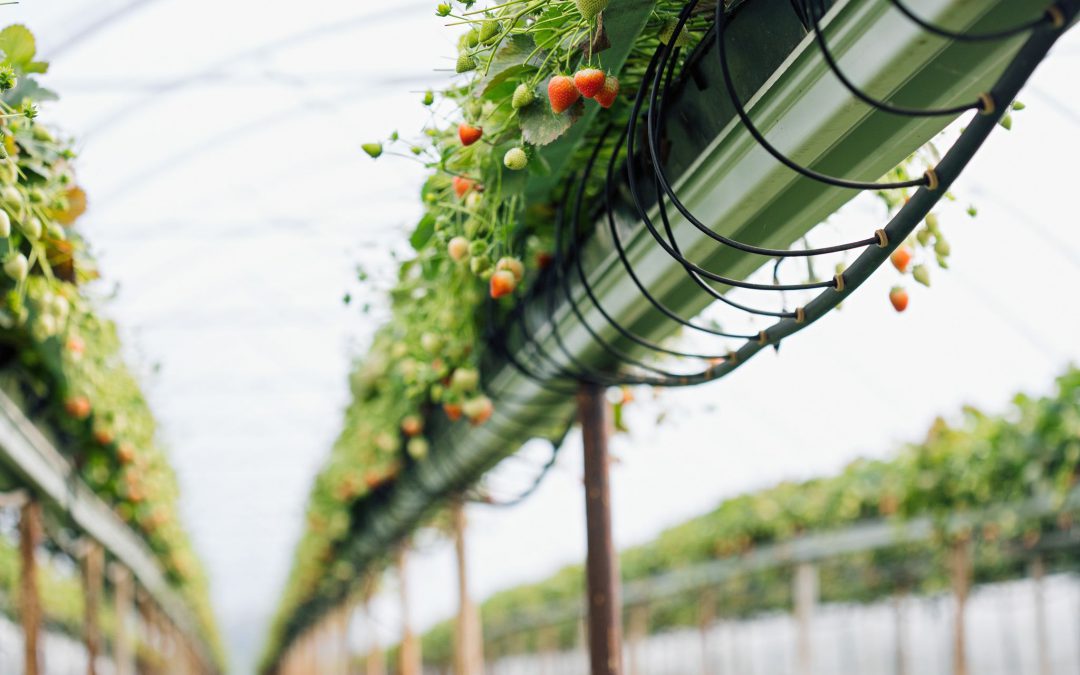Strawberry (Fragaria L.) is an economically very important fruit. With the improvement of fruit production as a whole, strawberries gained special significance as an accompanying or basic variety in a certain region.
The fruits of the wild strawberry (Fragaria vesca L.) are among the first fruits that man began to use. Strawberry has several valued properties. The fruits contain up to 12% dry matter, 6.5 to 7.8% sugar; 0.6 to 2.0% acid; significant amounts of iron and phosphorus, pectin, tannins, vitamin C (25 to 150% mg), vitamin E, and some B vitamins.
Due to its chemical composition, strawberry fruit is a biologically very important source of protective substances that enable normal and proper development of children and adults, preserve their health and affect the faster and more successful treatment of some diseases. Strawberry fruits ripen very early, at a time when the market is poorly supplied with fresh fruit. Strawberry adapts very easily and well to different environmental conditions, which has enabled it to be successfully grown in a wide area from sea level to 1000m above sea level.
The USA has the largest production of strawberries in the world (1,148,530 tons). After the USA come: Turkey, Mexico, Poland, Egypt, etc.
A secure yield and profit will be ensured by growing strawberries in a protected environment. The protected space is provided by metal, wooden or plastic construction covered with a single or double PE foil. In this way, strawberries can be grown in low tunnels, semi-high tunnels, high tunnels, greenhouses, and hothouses.

A TUNNEL is an enclosed space where sloping arches and plastic foil (roof) start from the ground; A GREENHOUSE is a closed space where arches and plastic (roof) start from a certain height, ie from the support pillars. In the interior of the greenhouse, a higher temperature is achieved with smaller daily fluctuations, soil moisture is better maintained, thus ensuring the earlier movement of vegetation, higher yield by 30-40%, and fruit ripening can occur up to 20 days earlier, which significantly affects production profitability.
The hydroponic method of cultivation is the technology of growing in nutrient solutions with or without the use of an inert medium (peat, coconut fiber, perlite), which provides mechanical support to the plant.
The success of the application of different hydroponic cultivation systems in a protected area depends on the size of the container, physical and chemical properties of the substrate, the method of fertilizer application with adequate doses, as well as the applied irrigation method, duration, and watering norms.

Variety of the fruit, type of protected area, and heating are the main factors for achieving early and off-season production. It is very important to regulate the microclimatic conditions inside the building (light, temperature, relative humidity), as well as the regulation of light conditions, which includes control of the light intensity, the ratio of direct and diffused light, and light quality – spectral composition. In the winter months and during cloudy days, there is a need for additional lighting (reflectors or halogen bulbs are usually used).
All irrigation and fertigation systems can be installed in the building (they also include a water purification system).
Maintenance and care of strawberry plantations
One of the preconditions for successful strawberry production, high yield, and quality fruit, is irrigation, ie the arrival of a sufficient amount of water in the soil. Insufficient moisture in the soil causes difficult functioning of plants, while excessive moisture causes bad consequences.
Different methods of irrigation can be used in strawberry orchards, as well as for other fruit species. The low growth of plants, the position of leaves and fruits should be taken into account, especially when irrigation is done just before fruit ripening or during the harvest itself, so for all these reasons, drip irrigation is the most acceptable in larger areas.
One of the biggest advantages of this type of irrigation is adding water directly to the root of the plant. The strips are placed so that they stand directly next to the plants so that only the zone of the root system is irrigated. The water goes directly to the root of the plant.

Benefits of Hydroponic and drip irrigation systems
WATER SAVINGS
Efficient use of water. By irrigating only the zone of the root system, not wetting the paths, and not watering the parts where there are no plants, the amount of water for watering is reduced.
EASY INSTALLATION
The drip system is a relatively inexpensive watering system and is easy to install.
EVEN AND PRECISE WATERING
There is no stress for plants due to sudden changes in humidity
REDUCED WEED APPEARANCE
Due to irrigation exclusively in the zone of the root system, the occurrence of weeds is reduced because there is no unnecessary wetting of the surrounding surface if it is about growing strawberries in an unprotected environment.
WIDE APPLICATION
For different terrain configurations and different soil types. The strips contain emitters that leak different amounts of water (from 2-12 liters per meter). Based on the characteristics of the terrain, water, and the needs of plants for water, the correct irrigation regime is determined
based on when the selection of irrigation strips.
SUITABLE FOR FERTIRIGATION
The drip system is ideal for fertilizing plants with water-soluble fertilizers because in this way the dosing and application of food directly to the root zone of the plant is performed.
DOES NOT REQUIRE SPECIAL MAINTENANCE
Once installed, the drip system requires no maintenance. All that is needed is to correctly determine the irrigation regime and fill the system with water.
– Books of professor Jasminka Milivojević were used for academic research and writing purposes.

